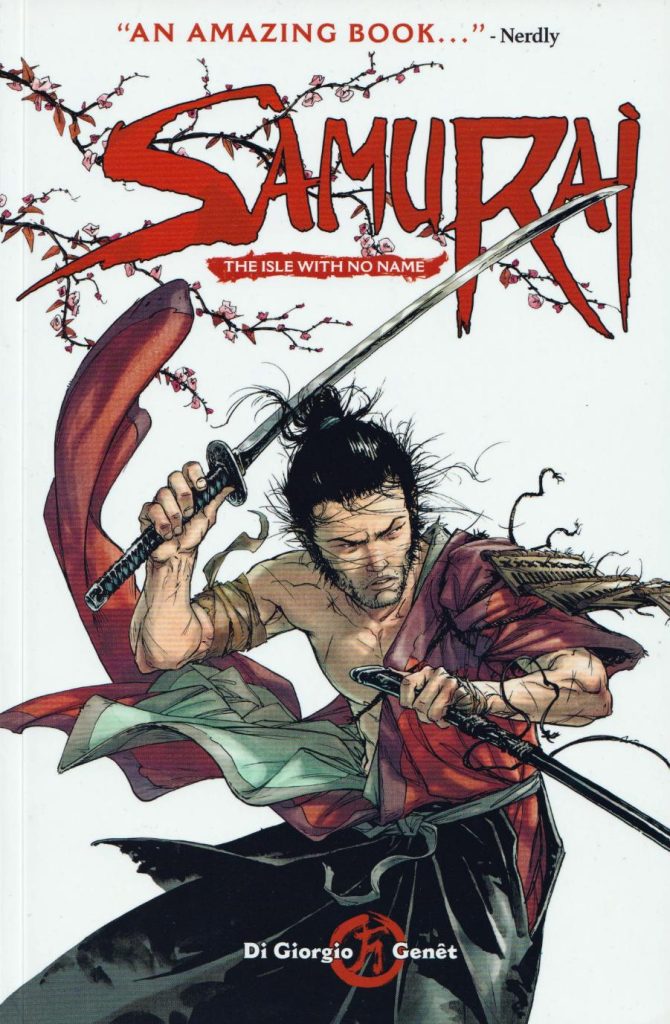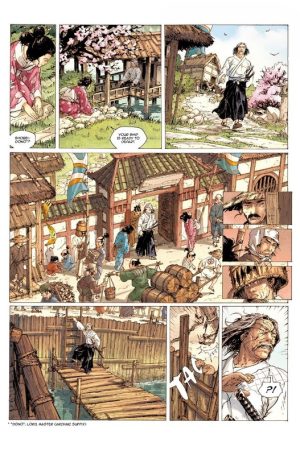Review by Frank Plowright
Takeo, the Samurai of the title, was last seen taking leave of his allies and setting sail for the forbidding Isle With No Name, hoping to discover more about his heritage. It was revealed during the course of The Heart of the Prophet that the brother who left him in the care of monks when he was a young boy may still be alive, while a villain alluded to Takeo’s ancestry without providing further clues. Readers were supplied with a little more information, some specific, some hinted at.
It’s not giving too much away to reveal Takeo’s progress is hindered as Jean-François Di Giorgio ensures he’s kept busy with the problems of the islanders, both a form of plague and his visit coinciding with the annual visit of a warlord extorting a tithe. The villagers can be exempt, but only if they’re able to defeat the warlord’s champion. No, it doesn’t take a master detective to figure where the plot is heading, but the joy is in the journey, and besides, that only covers the first half.
This paperback and the following Brothers in Arms aren’t in the larger hardcover album format helping to make The Heart of the Prophet so alluring, and the reduced page size disappoints considering the expansive quality of Frédéric Genêt’s art and the effort he makes with detail. Mitigating that is Genêt modifying his approach. The art remains precise and detailed, with every panel delicately composed, but there are decidedly fewer of the double page spreads generating such awe in The Heart of the Prophet, just two in fact, which is disappointing.
A matter on which this improves on the first story, though, is Di Giorgio shedding the original supporting character of a bumbling and complaining servant, and replacing him with the wily, dissolute monk given a cameo role last time. He also provides comedy moments, but his deceitful character makes him a more uncertain proposition.
While all the delicacy may seem provided by Genêt, that’s not the case. Di Giorgio includes wordless sequences, but that doesn’t mean they’re not plotted, and what occurs and how people react is down to him, with a dialogue free scene involving butterflies a wonderful touch. The way tension is sustained over the second half is also exemplary. It’s extended by the three rounds of a contest, each separated by a day, while what occurs between is equally important, with clever use made of botany. However, astute readers will predict what happens near the end and why despite Di Giorgio not making it as obvious.
The Isle With No Name doesn’t match the first volume, which would be some task, yet it’s still hugely enjoyable.





